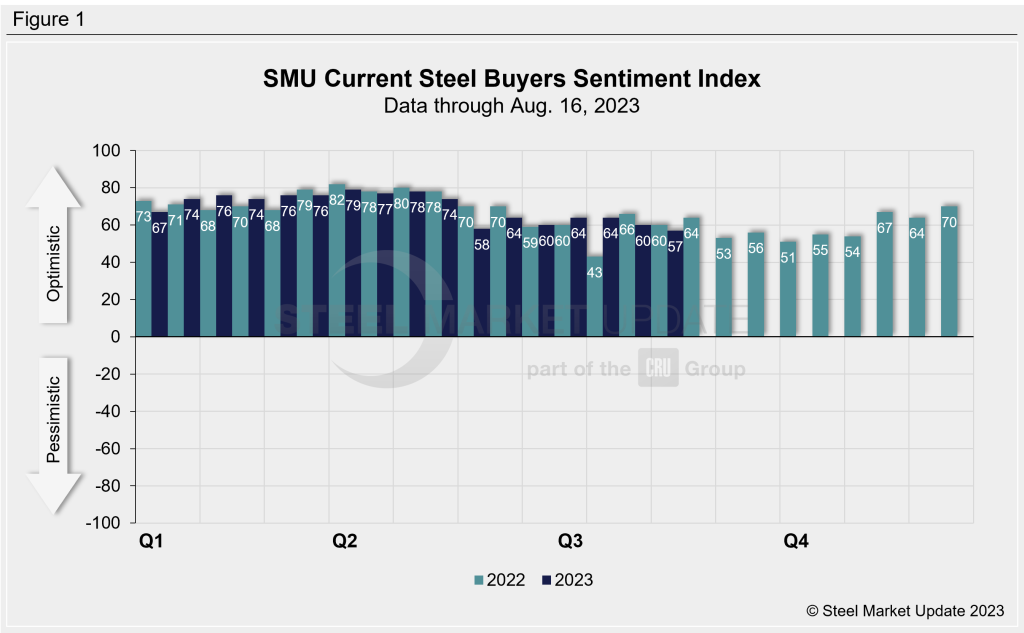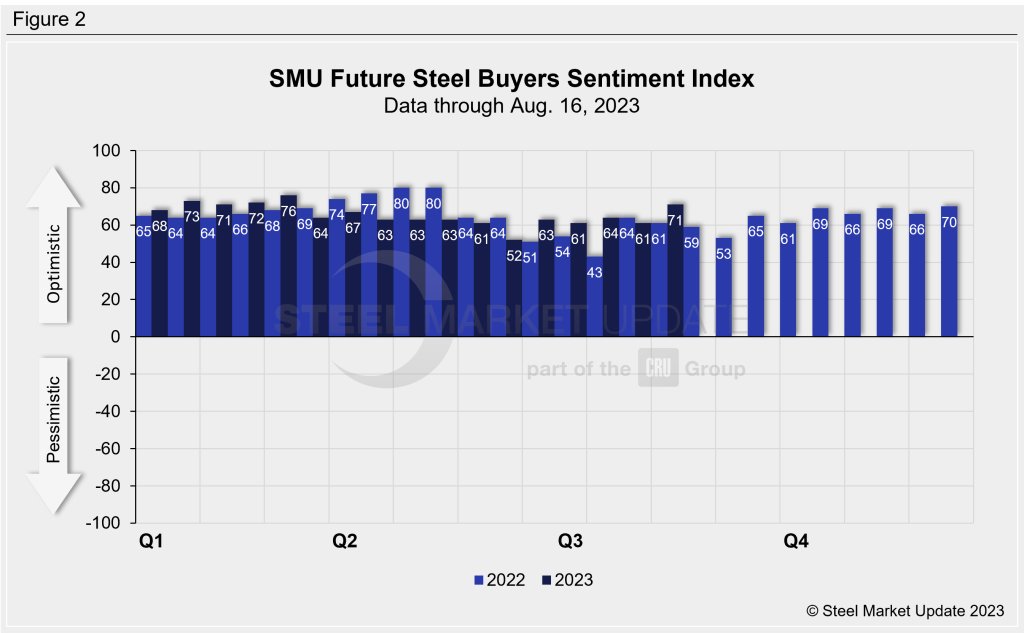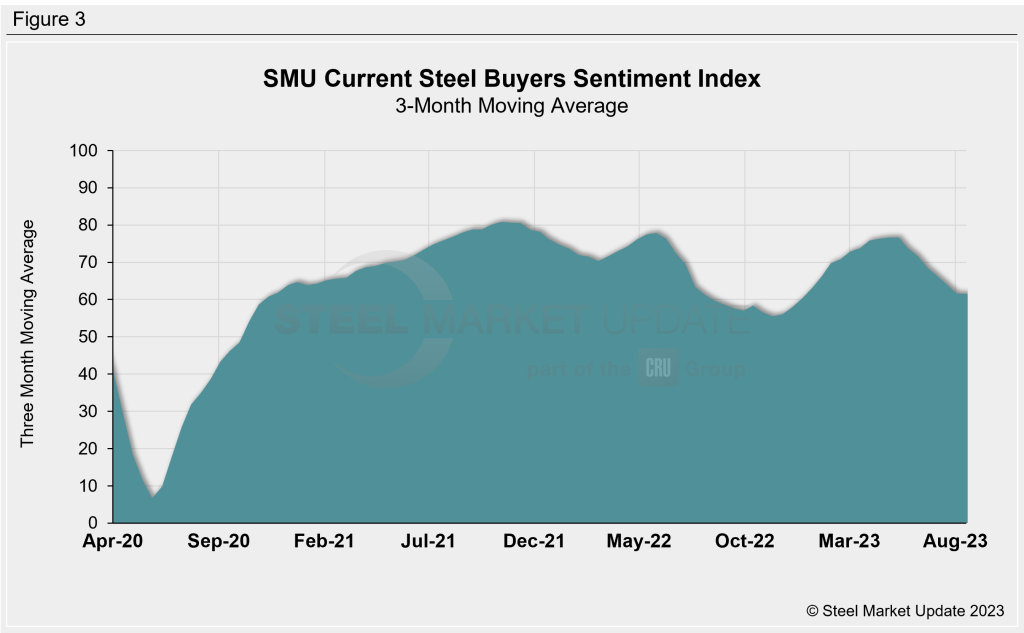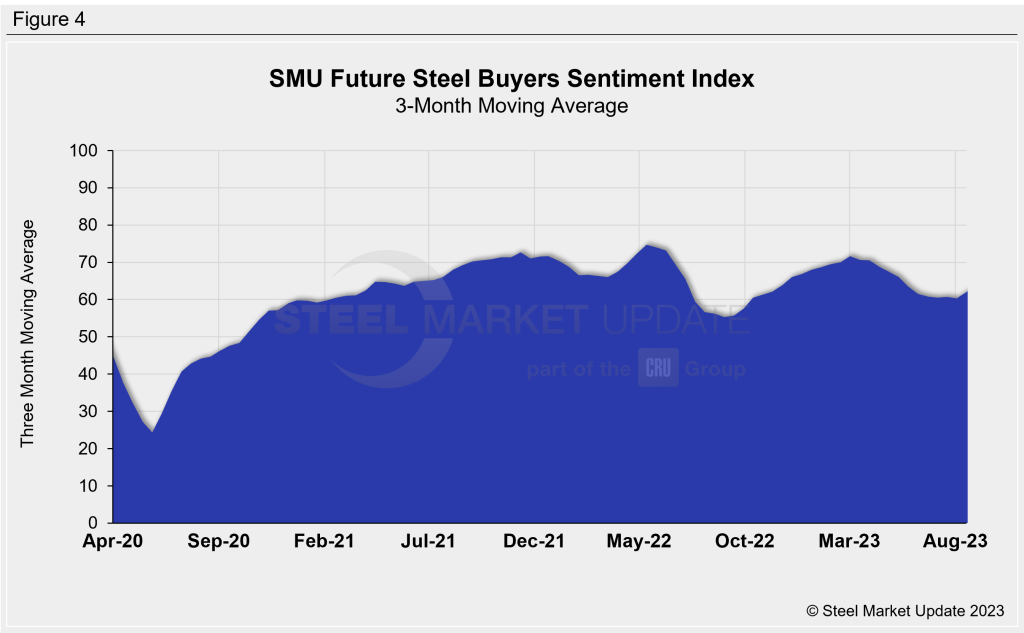Analysis
August 18, 2023
Current Sentiment Index Falters as Future Index Soars
Written by Ethan Bernard
SMU’s Current Steel Buyers Sentiment Index slipped this week, while the Future Buyers Sentiment Index jumped 10 points from the last market check, according to our most recent survey data.
Every other week we poll steel buyers about sentiment. The Steel Buyers Sentiment Indices measure how steel buyers feel about their company’s chances of success in the current market, as well as three to six months down the road. We have historical data going back to 2008.
SMU’s Current Buyers Sentiment Index stood at +57 this week, off from +60 two weeks prior (Figure 1). This is the first time it’s dipped below +60 since the end of May, and only the second time this year.

SMU’s Future Buyers Sentiment Index measures buyers’ feelings about business conditions three to six months in the future. This week, the index increased to +71 from +61 two weeks earlier (Figure 2). This represents the largest spread of future above current sentiment this year.

Measured as a three-month moving average, the Current Sentiment 3MMA edged down to +61.50 vs. +61.67 two weeks earlier. (Figure 3).

This week’s Future Sentiment 3MMA increased to +62.00 from +60.33 at the last market check (Figure 4).

What SMU Survey Respondents Had to Say:
-“ It all depends if true demand will increase or soften.”
-“If we have the inventory, we can perform to expectations—if not, we won’t.”
-“Will the Fed continue to tighten the fiscal policy? Will the markets react positively or negatively to that? If you know, let me know.”
-“Business on the import side is somewhat limited for mills operating with Section 232 tariffs.”
-“Worth noting, that as an OEM, we prefer lower steel prices.”
-“Buyers are racing to get their inventories down with prices falling.”
About the SMU Steel Buyers Sentiment Index
The SMU Steel Buyers Sentiment Index measures the attitude of buyers and sellers of flat-rolled steel products in North America. It is a proprietary product developed by Steel Market Update for the North American steel industry. Tracking steel buyers’ sentiment is helpful in predicting their future behavior.
Positive readings run from +10 to +100. A positive reading means the meter on the right-hand side of our home page will fall in the green area indicating optimistic sentiment. Negative readings run from -10 to -100. They result in the meter on our homepage trending into the red, indicating pessimistic sentiment. A reading of “0” (+/- 10) indicates a neutral sentiment (or slightly optimistic or pessimistic), which is most likely an indicator of a shift occurring in the marketplace. Sentiment is measured via SMU surveys twice per month.







